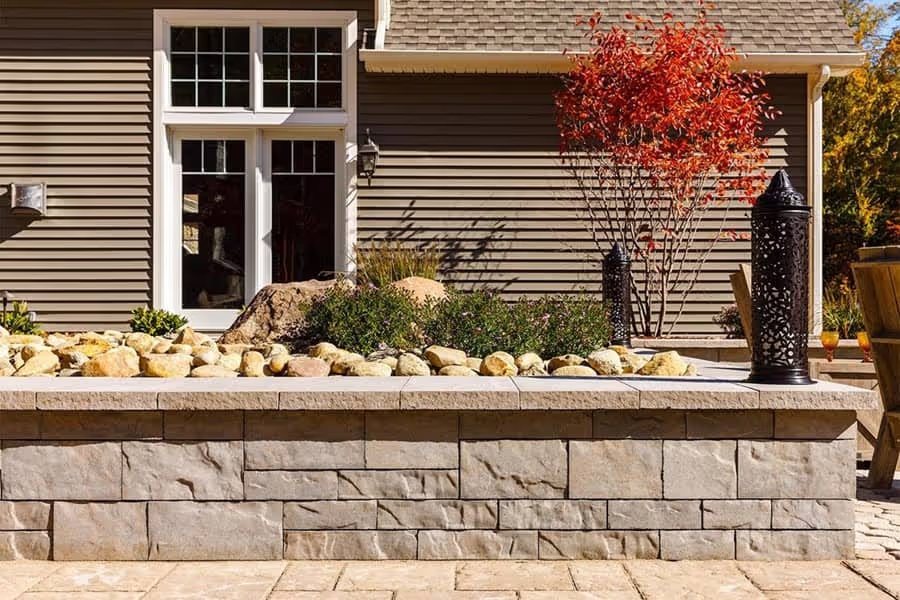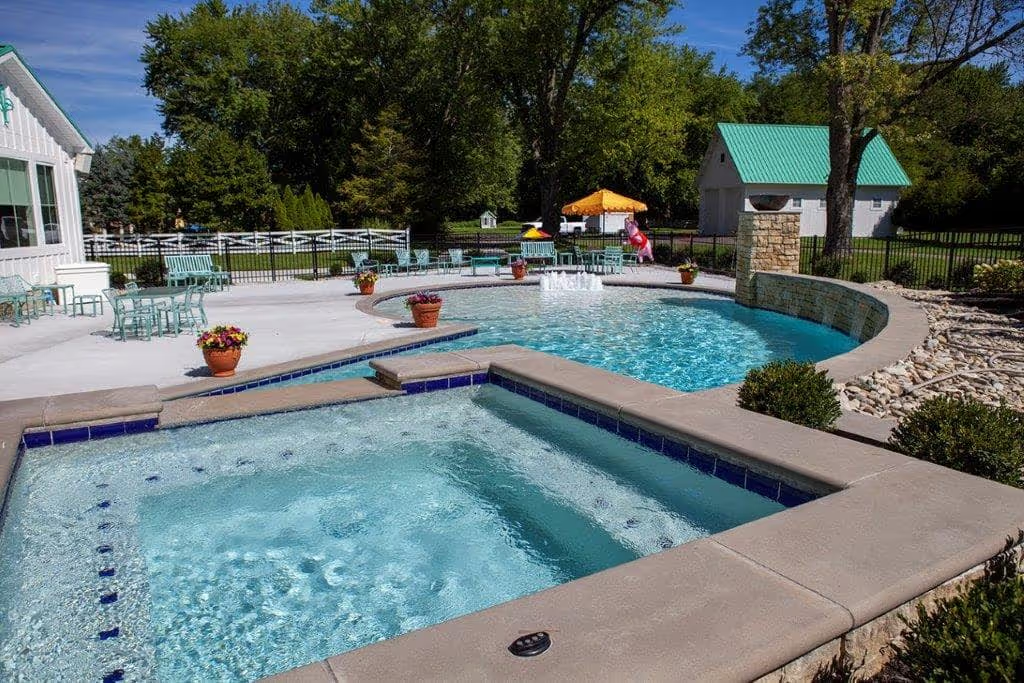- Stone Center
- Blog
Landscaping Focal Point Ideas: Transforming Your Backyard
23/7/2025
6/17/2024
Landscaping Focal Point Ideas: Transforming Your Backyard

Imagine stepping into your backyard —– a space not just for rest and relaxation, but a visual journey that captures attention and draws you deeper into its absolutely beautiful essence. This is the power of a well-placed focal point. It’s the element that elevates a collection of plants and features into a captivating landscape, guiding the eye, creating a sense of place, and adding that “wow factor” that makes your yard truly special. Especially when incorporating products made from natural stone, which can lend a timeless elegance and lasting beauty to your outdoor space.
This comprehensive guide explores the art of landscaping focal point ideas, from understanding their essential role to exploring diverse options and mastering the techniques for incorporating them into your outdoor space.
Whether you’re dreaming of a serene garden retreat or a vibrant outdoor entertaining area, focal points are essential in creating a landscape that reflects your style and impresses every visitor.
What Is a Focal Point?

Think of a focal point as the star of your landscape show. It's the element that immediately grabs attention and draws the viewer's eye. This could be a stunning sculpture, a vibrant flower garden, a dramatic water feature, a majestic tree, or even a strategically placed bench.
The key is that the focal point stands out from its surroundings, demanding attention and creating a visual anchor that grounds the entire backyard and front yard design.
Why Are Focal Points Essential in Landscaping?
- Create Order and Structure: Without a focal point, a landscape can feel chaotic and unorganized. Focal points create a sense of structure and hierarchy to guide the eye through the space and establish a clear visual flow.
- Enhance Visual Interest: Focal points add depth and dimension to your landscape, breaking up monotony and creating intriguing pockets of interest that invite exploration.
- Highlight Key Features: Focal points can be used to draw attention to specific areas or elements within your landscape, such as a beautiful entrance, a charming seating area, or a captivating garden bed.
- Create a Sense of Destination: Focal points can transform a simple walk through your garden into a journey with a clear destination, enticing visitors to explore and discover hidden gems along the way.
Landscaping Focal Point Ideas
Your landscape is your canvas, and focal points add depth, personality, and visual intrigue. Our team at Stone Center has outlined some captivating ideas to inspire your creativity:
1. The Power of Plants

Plants are the backbone of any landscape, and they offer endless possibilities for creating stunning focal points.
- Majestic Trees: A stately oak, a weeping willow, or a flowering cherry tree can serve as the centerpiece of your landscape as they command attention with their size, form, and beauty.
- Vibrant Flower Gardens: A strategically placed flower garden, bursting with color and texture, can inject energy and vibrancy into your outdoor space.
- Sculptural Plants: Plants with unique forms and textures, like succulents, topiaries, or ornamental grasses, can create architectural interest and serve as living sculptures within your landscape.
- Unique Specimen Plants: Seek out unusual or rare plants with eye-catching foliage, blooms, or growth habits to create a focal point that sparks curiosity and conversation.
2. Architectural Allure
Man-made structures from natural stone in landscaping can add a touch of artistry and permanence to your outdoor space, serving as enduring focal points.
- Sculptures: A well-chosen sculpture can elevate your landscape to an art form, adding sophistication and visual intrigue.
- Fountains and Water Features: The soothing sounds and dynamic movement of water features create a mesmerizing focal point that enchants the senses.
- Arbors and Pergolas: These architectural structures can frame views, create a sense of passage, and add vertical interest to your landscape.
- Walls and Trellises: Use walls or trellises to define spaces, create privacy, and add visual interest. They can also serve as backdrops for showcasing climbing plants or showcasing artwork.
- Unique Structures: Consider incorporating gazebos, pavilions, or even a custom-built treehouse as a distinctive and captivating focal point.
3. Functional Focal Points
Sometimes, the most compelling focal points are those that serve a practical purpose.
- Fire Pits and Outdoor Fireplaces: A crackling fire creates a warm and inviting ambiance, drawing people together and transforming your outdoor space into a gathering place.
- Seating Areas: A strategically placed bench, a cozy patio set, or a hammock nestled amongst trees can create a welcoming resting spot that invites relaxation and contemplation.
- Dining Areas: An outdoor dining table, surrounded by lush greenery and twinkling lights, becomes the heart of outdoor entertaining, creating a focal point for shared meals and memorable gatherings.
- Outdoor Kitchens: An outdoor kitchen extends your living space and becomes a natural gathering place for family and friends. The grill, countertops, and dining area all contribute to creating a dynamic and functional focal point.
4. Harnessing the Elements
The natural elements — fire, water, and light — are another captivating way to create focal points that engage the senses.
- Fire Features: Fire pits, fireplaces, and fire bowls create a captivating dance of light and warmth, adding a touch of drama to your landscape, especially during the evenings.
- Water Features: Fountains, waterfalls, reflecting pools, and even simple bird baths introduce the soothing sounds and dynamic movement of water to create a focal point that enchants both sight and sound.
- Lighting: Strategically placed landscape lighting can highlight key features, create depth and dimension, and transform your outdoor space into a magical wonderland after sunset.
Incorporating Focal Points: A Step-by-Step Guide
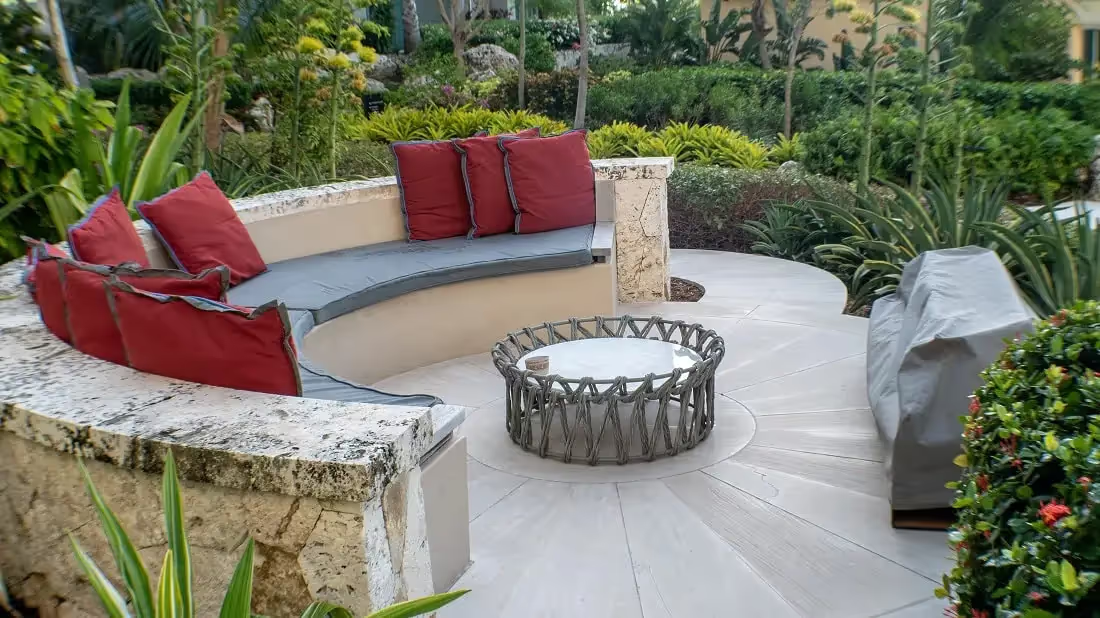
Transforming your focal point vision into reality requires a strategic approach. We encourage you to follow these steps to seamlessly integrate captivating focal points into your landscape:
Step 1: Assess Your Space
Before you dive into choosing a focal point, take a step back and truly understand your existing landscape. Walk around your yard, taking note of its strengths, weaknesses, and areas with the most potential. Consider:
- Size and Shape: A long, narrow yard will need a different focal point strategy than a square or circular space.
- Existing Structures: Do you have a patio, deck, or walkway that could be enhanced with a focal point?
- Views: What do you see from your windows, patio doors, or favorite sitting areas? Frame those views with strategically placed focal points.
- Sunlight: Take note of areas that receive the most sunlight throughout the day; these are ideal for showcasing sun-loving plants or features that gleam in the sunlight.
Step 2: Determine Your Style
Your personal style should be reflected in your landscape design, and the focal point should align with that vision. Consider:
- Classic: A formal garden with symmetrical plantings, a grand fountain, or a stately sculpture.
- Modern: Clean lines, minimalist design, a geometric water feature, or a contemporary sculpture.
- Rustic: A natural stone fireplace, a charming wooden bench nestled amongst trees, or a collection of vintage garden tools displayed artfully.
- Eclectic: A mix of styles, textures, and colors that reflect your unique personality.
Step 3: Choose Your Focal Point

With your style in mind, start exploring potential focal points. This is where your creativity comes into play! Consider:
- The "Wow" Factor: What element will truly captivate attention and create a sense of awe?
- Complementary Design: The focal point should enhance, not clash with, the surrounding elements.
- Practicality: Consider maintenance requirements, durability, and suitability for your climate.
Step 4: Consider Scale and Proportion
Size matters! The focal point should be proportionate to the surrounding space to create a sense of balance and harmony.
- Small Spaces: A delicate water feature, a colorful container garden, or a small sculpture.
- Large Spaces: A majestic tree, a grand fountain, or a sprawling flower garden.
Step 5: Frame Your Focal Point
Think of your focal point as a work of art that deserves a beautiful frame. Framing enhances its impact and draws the eye inward. You can use some techniques such as surrounding plants, architectural elements, or even strategically placed lighting.
Step 6. Guide the Viewer's Eye
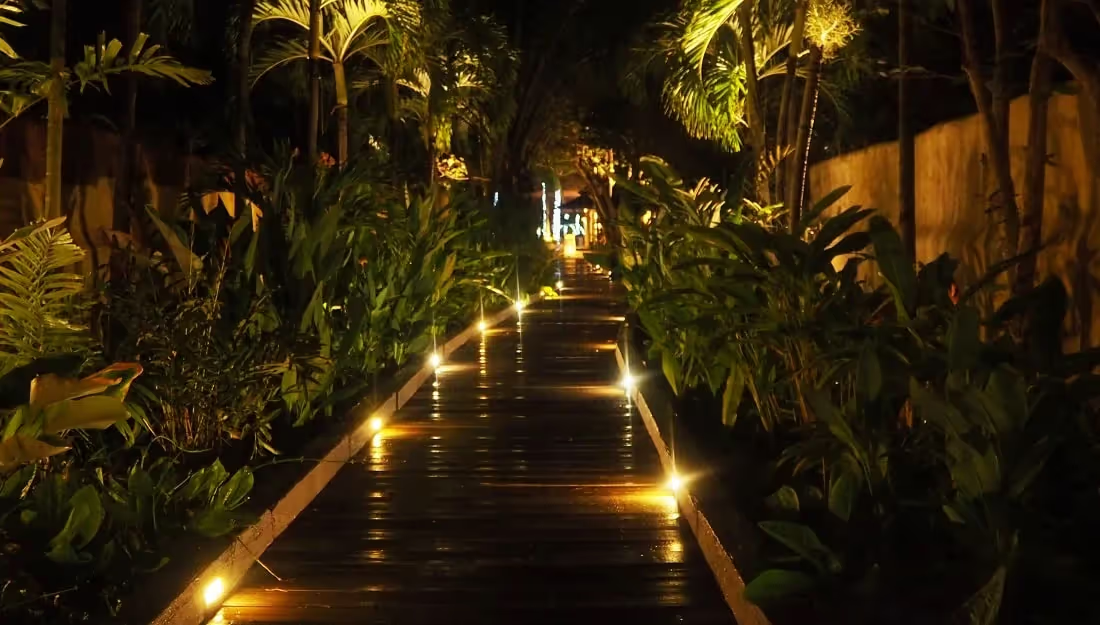
Use walkways and pathways, build stone steps, or even strategically place plants to create a visual path that leads the eye toward your focal point. This creates a sense of journey and anticipation, culminating in the final destination — your chosen centerpiece. Consider using curved pathways for a more organic and inviting feel, or straight lines for a formal and structured approach.
Step 7. Incorporate Multiple Focal Points
In larger landscapes, you can use multiple focal points to create distinct areas of interest and add visual depth. However, avoid overwhelming the space — aim for balance and harmony. Think of it as creating a series of "mini-journeys" throughout your landscape, each with its own captivating destination.
Small Tips for Creating Captivating Focal Points

Creating a focal point that truly captivates involves paying attention to the details and thinking outside the box. Here are some tips to elevate your focal point game:
- Think Outside the Box: Focal points don't have to be grand or expensive. A colorful container garden, a vintage bicycle propped against a wall, or even a whimsical birdhouse can create a charming focal point.
- Use Contrast and Color: Contrast helps a focal point stand out. This could be a contrasting color, texture, form, or even a play of light and shadow.
- Consider the View from Inside: Don't forget to factor in the view from inside your house. A focal point visible from a window can extend the beauty of your landscape indoors.
- Think About Functionality: A focal point that serves a purpose, like a seating area or a fire pit, becomes more than just a visual element; it adds practical value to your outdoor space.
Avoiding Common Focal Point Mistakes
While focal points are essential, they can backfire if they’re not implemented thoughtfully. Here are some common mistakes to avoid:
- Too Many Focal Points: Overloading your landscape with too many focal points creates visual clutter and diminishes the impact of each element. Ensure there's a clear visual hierarchy, with one main focal point taking center stage and others playing supporting roles.
- Poor Placement: A poorly placed focal point can disrupt the flow of your landscape and create a sense of imbalance.
- Lack of Contrast: A focal point that blends into its surroundings fails to grab attention and loses its impact.
Stone Center: Your Partner in Creating Landscaping Masterpieces
At Stone Center, we understand the power of focal points in transforming landscapes into captivating and meaningful spaces. We offer a diverse selection of natural stone products, from elegant outcropping stones to classic limestone, that can serve as stunning focal points in your outdoor oasis.
Since 1952, our team has been dedicated to providing personalized guidance and support throughout your landscaping journey. We can help you select the perfect stone, size, and style to create a focal point that embodies your vision and enhances the beauty of your outdoor space.
Just ask our experts and let us help you transform your landscape into a work of art, where each element, carefully chosen and meticulously placed, contributes to a symphony of visual delight and enduring elegance.
FAQ
.avif)
Jon, the owner of Stone Center, is a knowledgeable expert in natural stone products, specializing in various types of stone for landscaping and architectural projects. Passionate about promoting the beauty and versatility of natural stone, Jon aims to use these blogs to inspire readers with creative ideas to upgrade their homes.
How much does it cost to get a stone restored?
How much you end up spending to restore stone varies on the type of stone, the technique, and the stone’s current condition. Stone in good condition will cost less to restore, whereas stone that has a lot of wear and tear may require a longer restoration.




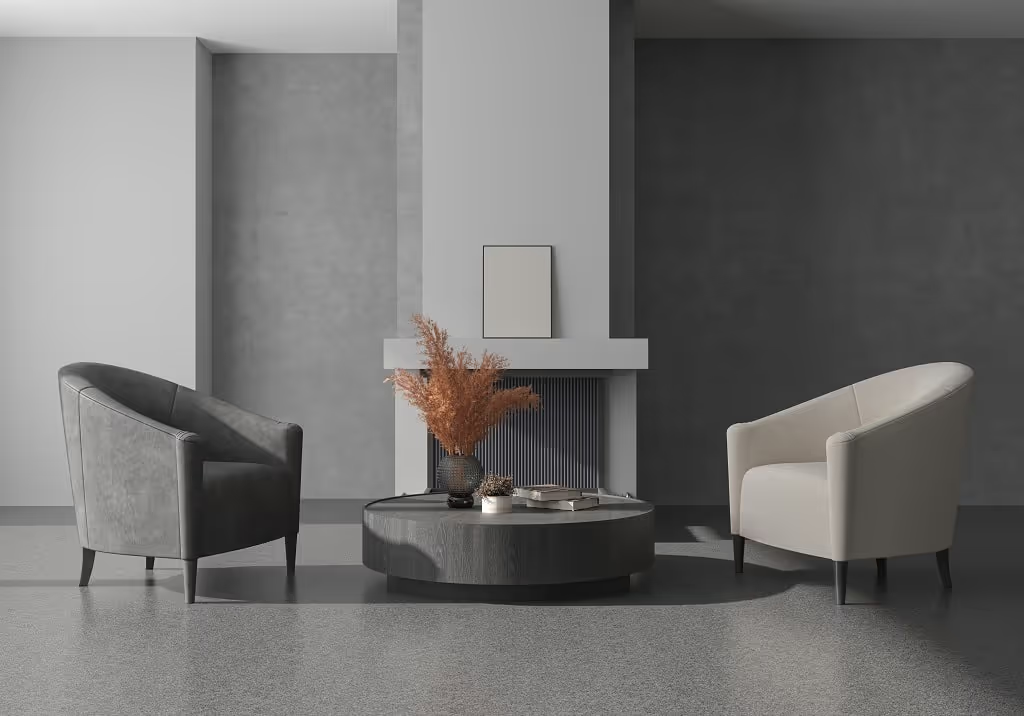

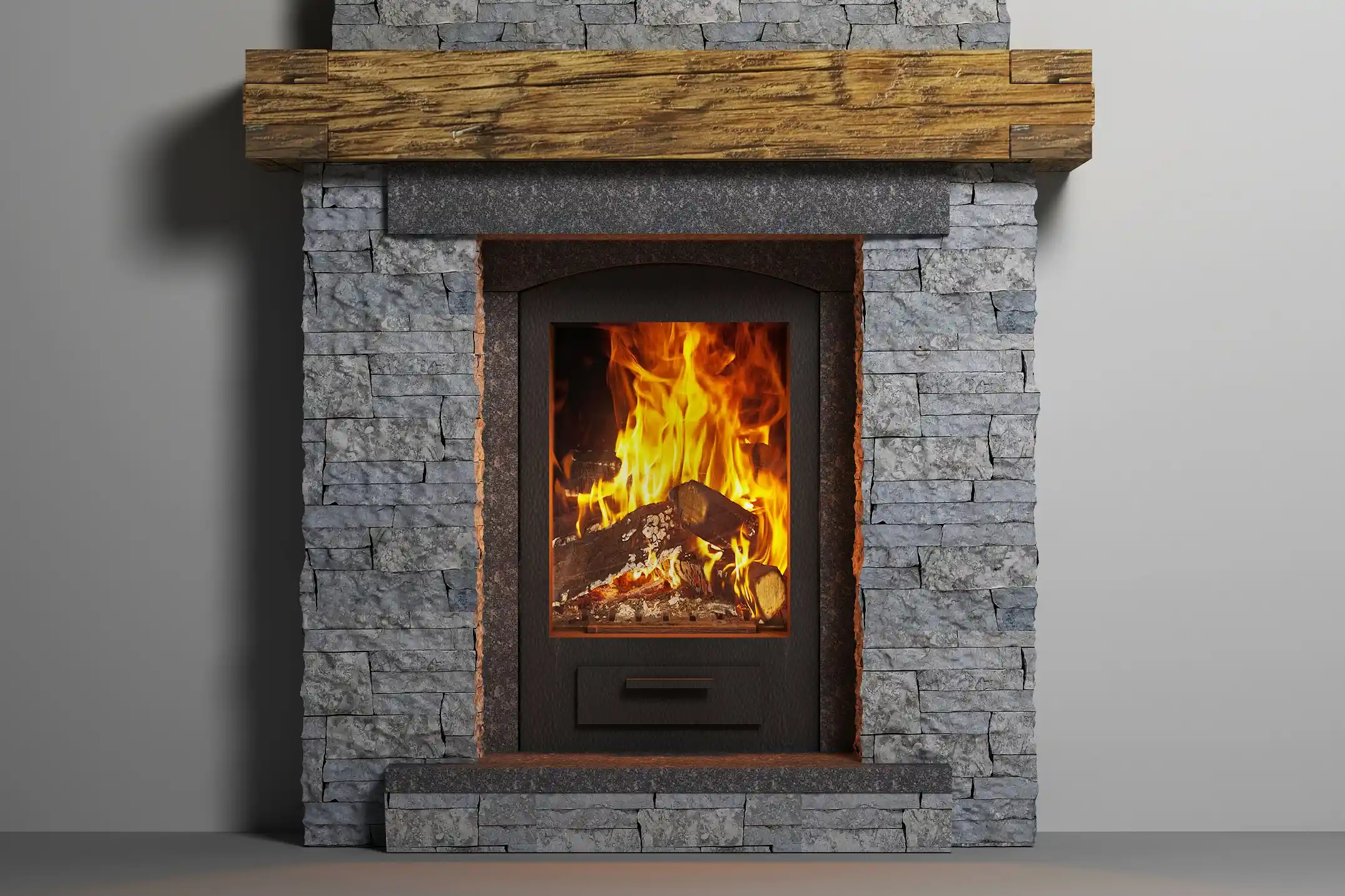
.avif)
.avif)
.avif)
